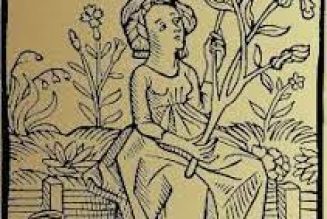Aesculapius
Aesculapius was a healer, son of Apollo and the mortal Corona, who lived during the eleventh century
BC, and became a god after Zeus killed him with a thunderbolt for raising the dead.
The first shrine dedicated to Aesculapius was built in Athens in the fifth century BC by Sophocles.
Other shrines followed in rapid succession, the most famous at Epidaurus, which became a major
healing centre. Many were sited at sacred wells and springs. These shrines were dedicated to healing
and dreams, and were the principle vehicle for obtaining relief or cure of illness of all kinds.
When Aesculapius appeared to the dreamers, he would tell them the medicine they should use and any
treatment that should be followed. He can be invoked for healing and meaningful dreams, for good
health and for divination.
Ganga
Ganga is the Hindu water goddess who is manifest as the sacred river Ganges, daughter of the
mountain Himalaya. She is a natural focus for healing rituals, as well as for happiness, fertility and
prosperity, and for Water magick.
Iduna
Iduna is the Viking goddess of eternal youthfulness, health and long life. As goddess of spring, she
possessed a store of golden apples that endowed immortality, fertility and healing and so she can form
a focus for healing rituals, and for spells for beauty, health and the granting of wishes, especially those
using apples as a symbol.
Panacea
Panacea is the Roman goddess of healing, who takes away pain. Daughter of Aesculapius, she and her
sister Hygeia assisted in healing the sick in their dreams at the dream temples.
She is good for healing rituals for women, children and especially teenage girls.
Sulis
Sulis, or Sulevia, is the Celtic goddess of healing and especially of healing waters. Her name is
derived from the Celtic word for the Sun and her most famous site is the hot mineral springs that have
for at least 10,000 years poured from the ground in Bath, in south-west England. From Celtic times,
perhaps even earlier, the springs became a formal centre of healing.
Sulis became Sulis Minerva under the Roman occupation and she maintained her role as a healing
deity. The significance of the sacred springs continued and Edgar, the first king of England, was
crowned there in AD 973. In medieval times, the springs were still a focus for healing pilgrimages and
in the seventeenth and eighteenth centuries Bath became a fashionable resort where the wealthy would
come to socialise and take the waters.
Sulis is potent for all healing water rituals. Because curse tablets as well as offerings have been
retrieved from the waters, she is also associated with justice through karma and the banishing of
sorrows.







